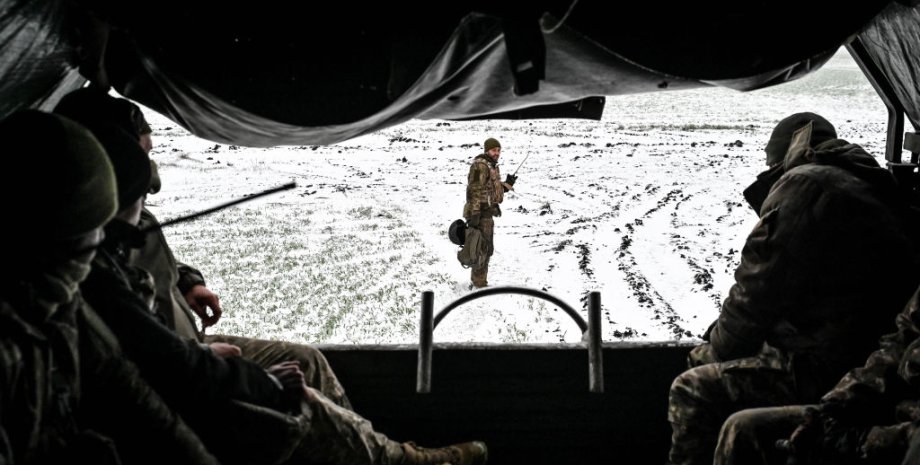
 By Natali Moss
By Natali Moss
For the second year, he did not particularly change the situation on the battlefield, but gave the Ukrainian army more Western equipment and weapons that partners refused to supply. Focus suggested what the third year of a full -scale war at three theaters of combat - on earth, water and in the air. From the end of 2023, Ukraine has been conducting a large -scale campaign for the construction of defense borders at the front and at the border with the Russian Federation and Belarus.
The military-political leadership of Ukraine does not disclose strategic plans for 2024, but numerous articles in Western media claim that Ukraine will hold strategic defense. Western analysts, such as Michael Kafman, Robman and Dara Massicot, directly indicate Ukraine's need to focus on conducting defense actions to accumulate power and increase its own production of weapons.
The nature of hostilities will largely depend on the allocation of military assistance package from the United States for 2024. Without it, it will be difficult for Ukraine, since now, according to analysts, the Ukrainian military shoots 2,000 ammunition against 10 thousand on the part of the Armed Forces of the Russian Federation. OSINT analytics believe that it is because of a shortage of ammunition that Russian troops can again destroy entire settlements.
In this way, they captured the ruins of Marinka, the battle for which lasted since 2014. Ukraine has already received ATACMS ballistic missiles with a cassette combat part. They have a smaller radius of action than fragmentation, so the Armed Forces also need rockets with a larger radius. Casket ATCMS have a range of 160 km and ordinary - 300 km. In early February, the United States announced the supply of GLSDB bombs, which have a range of 150 km.
Therefore, Ukraine will be able to strike high -precision shocks from 70 to 300 kilometers from HIMARS or M270 systems. One of the key points is now the number of enemy damage. Western weapons are depleted, production lines from partners have decreased multiple after the end of the Cold War. For example, it takes two years to make one NASAMS-American anti-aircraft missile complex. Ammunition is also a difficult situation.
France has three times increased production of ammunition, but on the scale of the Russian-Ukrainian war, this is not enough, since from 1 thousand ammunition a month the French came to 3,000 shells. Because of this, the situation on the front is difficult everywhere. The Russians received millions of shells from the DPRK, and constant mobilization allows you to replenish the losses and continue "meat storms". The Russian army remains an existential threat to Ukraine.
In Ukraine, the draft law on mobilization in the first reading, which should change the approach to the recruitment of the military to the army, as well as improve the situation with the number of military. It provides many innovations, in particular, a decrease in the conscript age to 25 years since the current 27. 2023 has become the year of active use of FPV-oules. There are a lot of videos on the Internet on the Internet, both from the Armed Forces and from the occupiers.
Ukraine has set itself the goal of producing 1 million FPV-aules in 2024. The popularity of drones is explained primarily by cost. In The Economist, prices compared prices: in the face of artillery ammunition deficiency, Ukraine is relying on FPV. In only two years of a full -scale war in Ukraine, a full -fledged area of drones of different types was created.
The independent OSINT analyst H and SUTTON analyzed the long-range UAVs in the Ukrainian shock arsenal: they all have different flight range and weight of the combat unit, but within the first two months of 2024 it is noticeable that Ukraine has become more common to use shock UAVs. Military objects and objects of gas or oil refining in the territory of the Russian Federation or in the temporarily captured territories of Ukraine become goals.
An important stage in the formation of unmanned technologies in the defense forces is the creation of forces of unmanned systems as a separate kind of troops. The drones have proven efficiency on Earth, in the air and in the sea. Thanks to sea drone, Ukraine has changed the situation with security in the Black Sea.
According to the FPV-Drone Operator Gleb Molchanov from the volunteer unit, with whom focus has communicated, the creation of forces of unmanned systems will improve the use of UAVs, because now not all commanders understand how to use them effectively. "New organizational opportunities will not only create special staff positions for working with drones.
These will be new units, as well as a system of accumulation, assessment, exchange of experience and preparation of use of drones,"-explains the importance of unmanned defense Minister Lieutenant General Alexander Pavlyuk. . You can expect further development of UAVs, an increase in the number of blows in Russia, as well as rockets. And along with the means of the defeat will be the further development of HRB and RA.
Already in the latest missile attacks of the Russian Federation, a certain number of rockets falls due to a radio electronic struggle, which mocks the satellite signal and the ammunition does not understand where it is in space. A blatric defense remains a critical issue for Ukraine. Western partners supply the Armed Forces of Patriot, SAMP/T and other systems, but Ukraine is a large state, so it is not enough to protect all cities.
There is already a project of Frankensam, which should modernize Soviet systems with the use of Western missiles. An example is the BUK, which was converted to Western anti -aircraft ammunition. The beginning of 2024 shows that the Russian Federation did not abandon the tactics of rocket terror. In one volley, you can still see dozens of missiles and drones that should hit objects and exhaust Ukrainian air defense. The "long hand" of the Armed Forces also replenished in 2023.
The winged Storm Shadow/Scalp-EG missiles appeared, which lacks German winged Taurus missiles. Germany does not transfer missiles to Ukraine. The Armed Forces also have its own winged Neptune missiles, which were reworked for lanes for terrestrial purposes. In 2024, Ukraine will receive F-16 fighters. For this purpose pilots are trained in the event, and in the Ukrainian territory prepare the necessary infrastructure. An important point will be the equipment of the aircraft and ammunition.
Air Force requires fighters with powerful radars to compete with the Russian Su-34 and Su-35. The latter have more powerful than the MiG-29 and Su-27, radars and missiles are now available. This means that the Russian pilot will first detect and impress the Ukrainian aircraft. The F-16 can change this situation. Obtaining the F-16 should allow Ukraine to gain local advantage on the front line. The planes themselves are an integral part of air defense. They should intercept winged missiles and drones.
Air forces need winged, anti -radiolocation, anti -ship missiles and other weapons. A multifunctional fighter can play several roles. "F-16, will certainly help Ukraine in terms of intercepting winged missiles, drones and will be able to some extent to drive Russian aviation away and help our land troops move in a particular direction," said Air Force Command Juri Ignat. He also added that the fighter jets will be able to control the airspace over the Black Sea to protect the "grain corridor".
It is officially stated that the first F-16 aircraft should come to Ukraine in 2024. If the Armed Forces are on the counter -offensive in 2025, fighters will be able to increase the chances of success in a particular direction. Thanks to asymmetrical actions, Ukraine has practically resumed exports, which was before the start of a full -scale war. Naval forces do not have the capacities that are in the Black Sea Fleet of the Russian Federation. However, Ukraine has sea drones.
It is known that the SBU, GUR and other intelligence services have their own development of drones. The last destruction of the Russian rocket launcher "Ivanovets" shows that Ukraine changes and improves the tactics of attack. According to a fighter of the special unit "13" GUR Ministry of Defense, 10 Magura V5 participated in the attack. Initially, one drone made a hole in the body, and then the next hit it. As a result, 6 drones were buried by Ivanovets.
The Russians are already working on their sea drones. The Kingiseppe Machine-Building Plant showed its own remote controlled boat GK-700 Vizir. Its range range is declared at 500 km, and the maximum speed is up to 43 knots (79 km/h). This means that the Russian Federation will respond to Ukrainian strokes with its developments. Ukraine should always be two steps in front of dominance in the Black Sea, so there is already a work on the creation of an underwater drone as part of the Fury's project.
The maritime platform can be in several versions: autonomous submarines can be the next step for Ukraine, because they can suddenly catch a Russian ship. The Navy Commander of Ukraine, Viecadmiral Alexei Shepapa, acknowledges that some tactics that worked earlier may be ineffective in 2024. In the dry result, the Ukrainian struggle depends on Western assistance, as well as the development of technologies, which was spoken by the former commander -in -chief of the Armed Forces Valery Zaluzhny.










All rights reserved IN-Ukraine.info - 2022